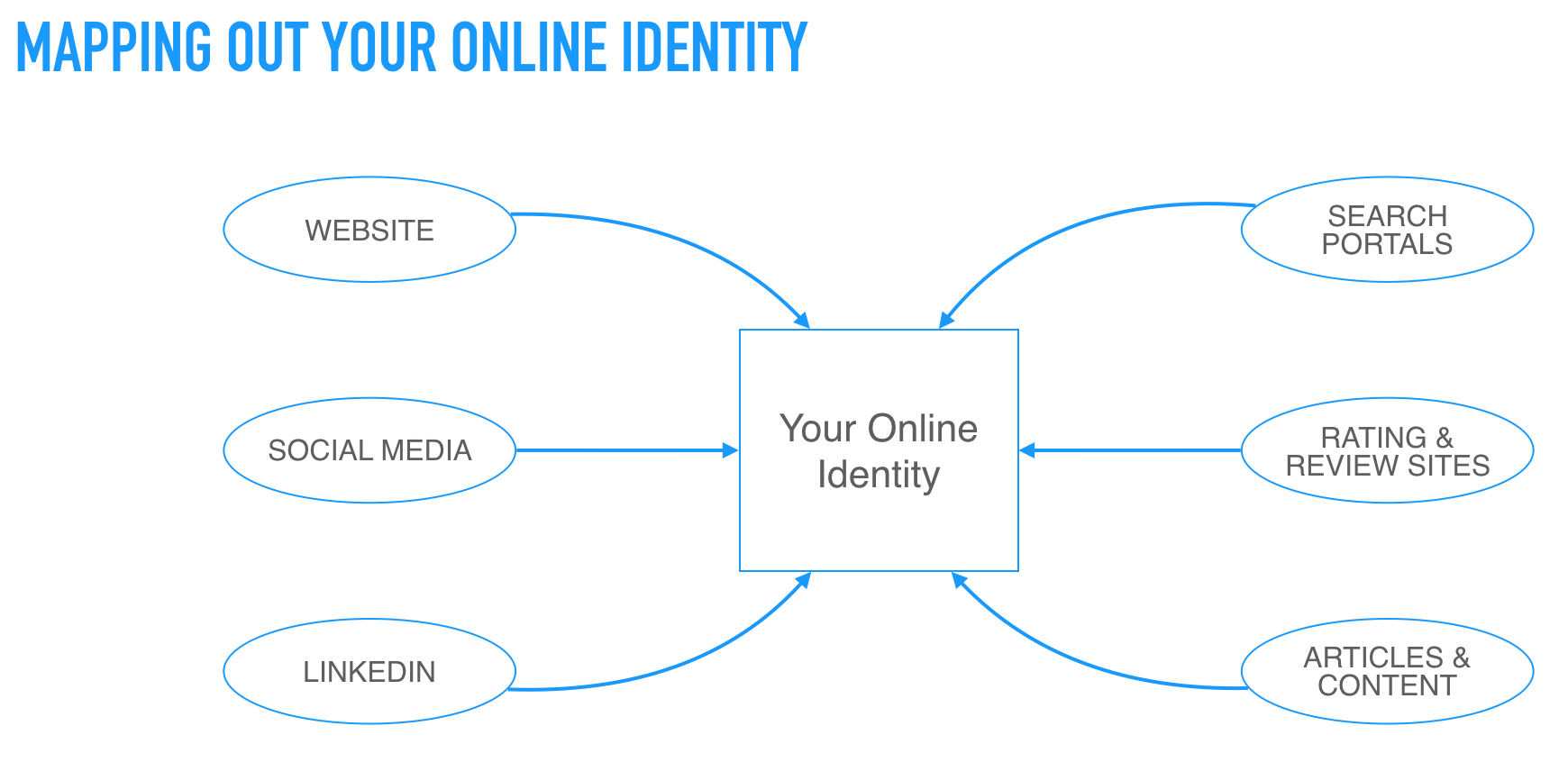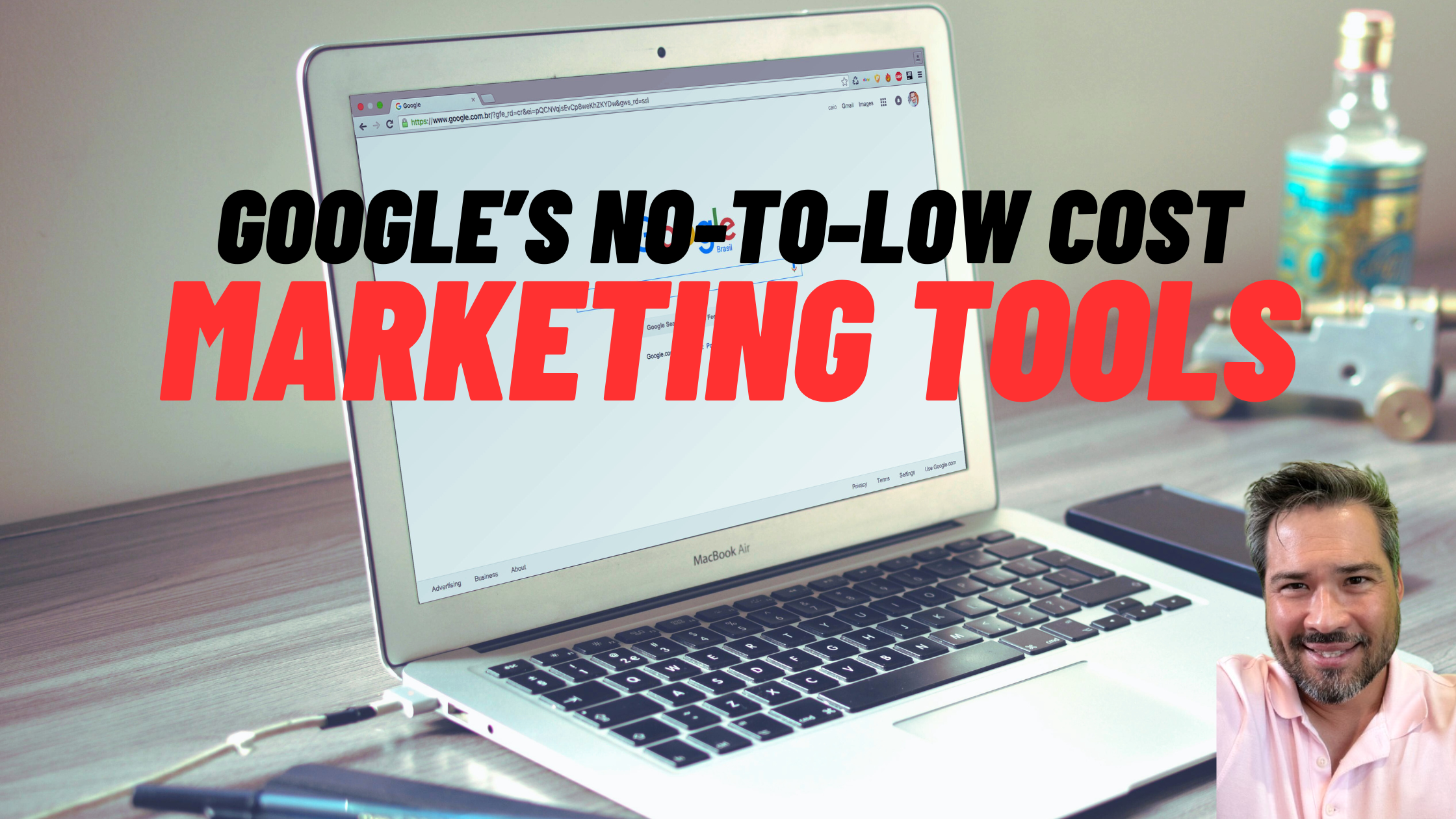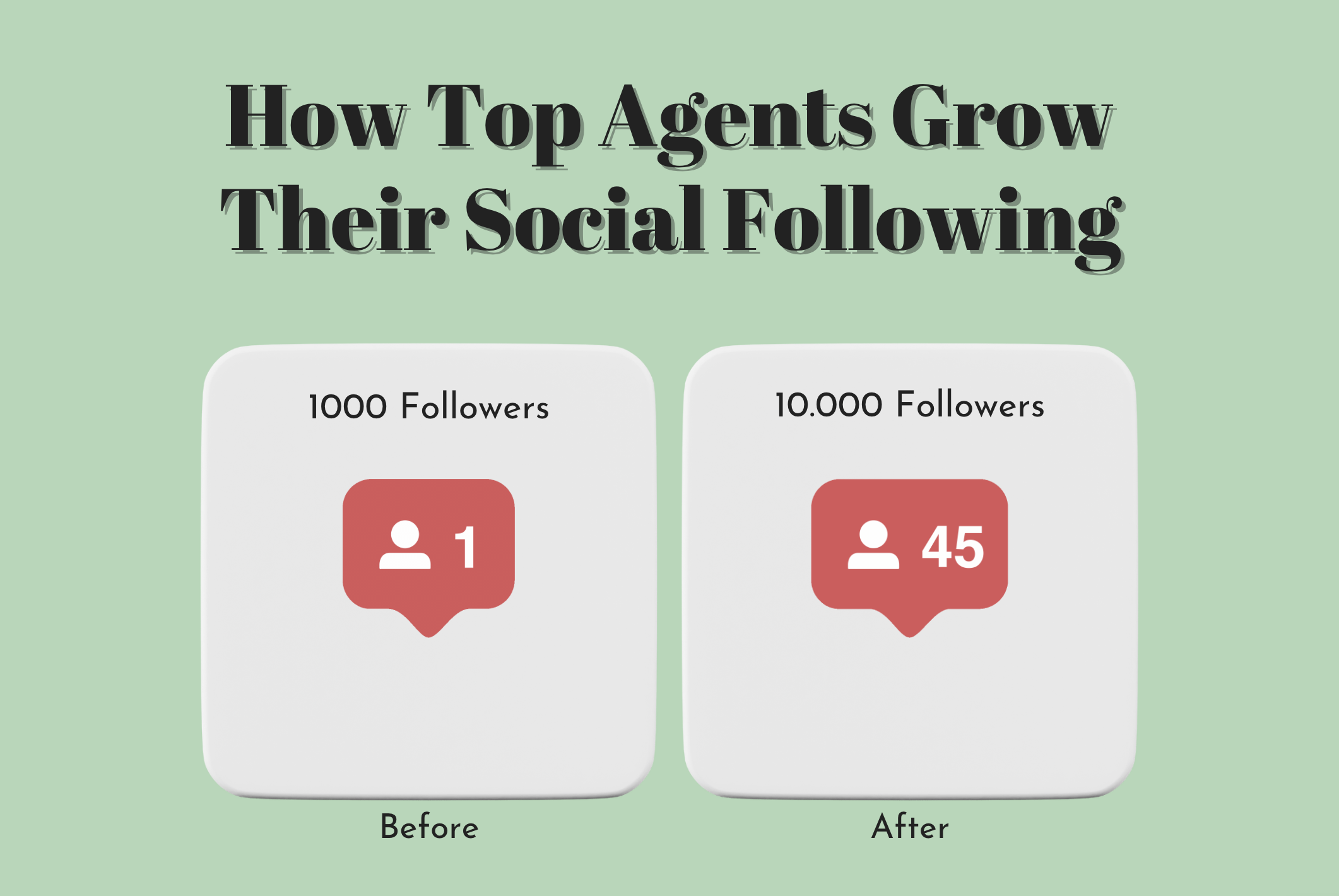
Did you Google yourself yesterday? What’d you find? For our agents, the experience generally went one of two ways…
- They either saw a lot of results, and were not sure how to handle it…
- Or they saw almost no results, and wondered how to get some.
Either way, Googling yourself and thinking about how to craft what shows up can be overwhelming. It’s difficult to know where to apply focus.
That’s why we created the Online Identity Map. It shows you what feeds into your online identity and gives you a process for refining your online identity.
- Website: This one is pretty clear. Whether it’s your personal website or a page on your broker’s website, this is one of the most important aspects of your online identity. Clients want to see that you have a website that shows you are up-to-date and competent.
- Social Media: Social media is critical. Whether we’re talking about Facebook, Instagram, Twitter, or another site, each of these platforms provides us with a way to present ourselves and our expertise to potential clients. But you need to use these platforms correctly! The biggest mistake we see is people using their personal accounts as both personal and business accounts. Not only is this against the Terms of Use for a lot of social media platforms (Facebook, for example), it’s also not professional. Make sure you have accounts dedicated to business where you post, tweet, etc. about real estate, things related to real estate, and so on.
- LinkedIn: While LinkedIn is technically another social media platform, we treat it a little bit differently. Why? LinkedIn almost always features in the top 5 Google results, and you want to make sure yours is completely filled out. Quick tip: To stand out from other LinkedIn profiles, make sure you include photos and multimedia. You can also post articles and content to LinkedIn!
- Search Portals: By search portals, we’re referring to home-search sites that consumers use. From our research, we’ve found that clients will often look us up at these sites. If you’re going to show up there, go ahead and take the time to claim your profile. A good place to start is Realtor.com. Realtor.com ranks high on Google, and gives you a lot of control of your profile. This allows you to have a powerful representation of you high up the Google search results.
- Ratings & Reviews: Many agents we speak to are against online reviews or don’t want their online ratings and reviews to show up. But that’s the wrongs approach! Clients want to see reviews. They validate feedback they’ve heard or seen about you and your business. And if your intentional about collecting reviews from your clients, you can ensure you have positive ones that highlight the good work you do.
- Articles & Content: Articles and content are your opportunity to showcase your expertise and competence. The best example of this is a blog that demonstrates your expertise in your field. According to a report issued by Google, 2 in 3 home buyers / sellers said they research agents “extensively” online. The more you can do to build trust and show your competence as an agent, the better!
Process for Fine-Tuning Your Online Identity
Now that you know the different areas that compose your online identity, it’s time to start improving those areas and shaping them to deliver the first impression you want.
We’ve gone through this process with the agents at our brokerage, and we’ve broken the process for fine-tuning your online identity down into an easy step-by-step process.
- Google the most common search terms to find you (your name, name + company, etc).
- Update and enhance all the existing content about you.
- Create (intentional) content to add to your profile
- On your site
- On others’ sites
- On Social sites
- Share your content
- With customers
- Past clients
- Social Sites
If you go through this process and repeat it on a consistent basis, you’ll create an online identity that actually represents who you are and what you offer clients. Just be thorough and consistent.





Please send me the recording at dixie@homes2love.com. I am traveling. Send me an e-mail link!
AT: dixie@homes2love.com
Sent!